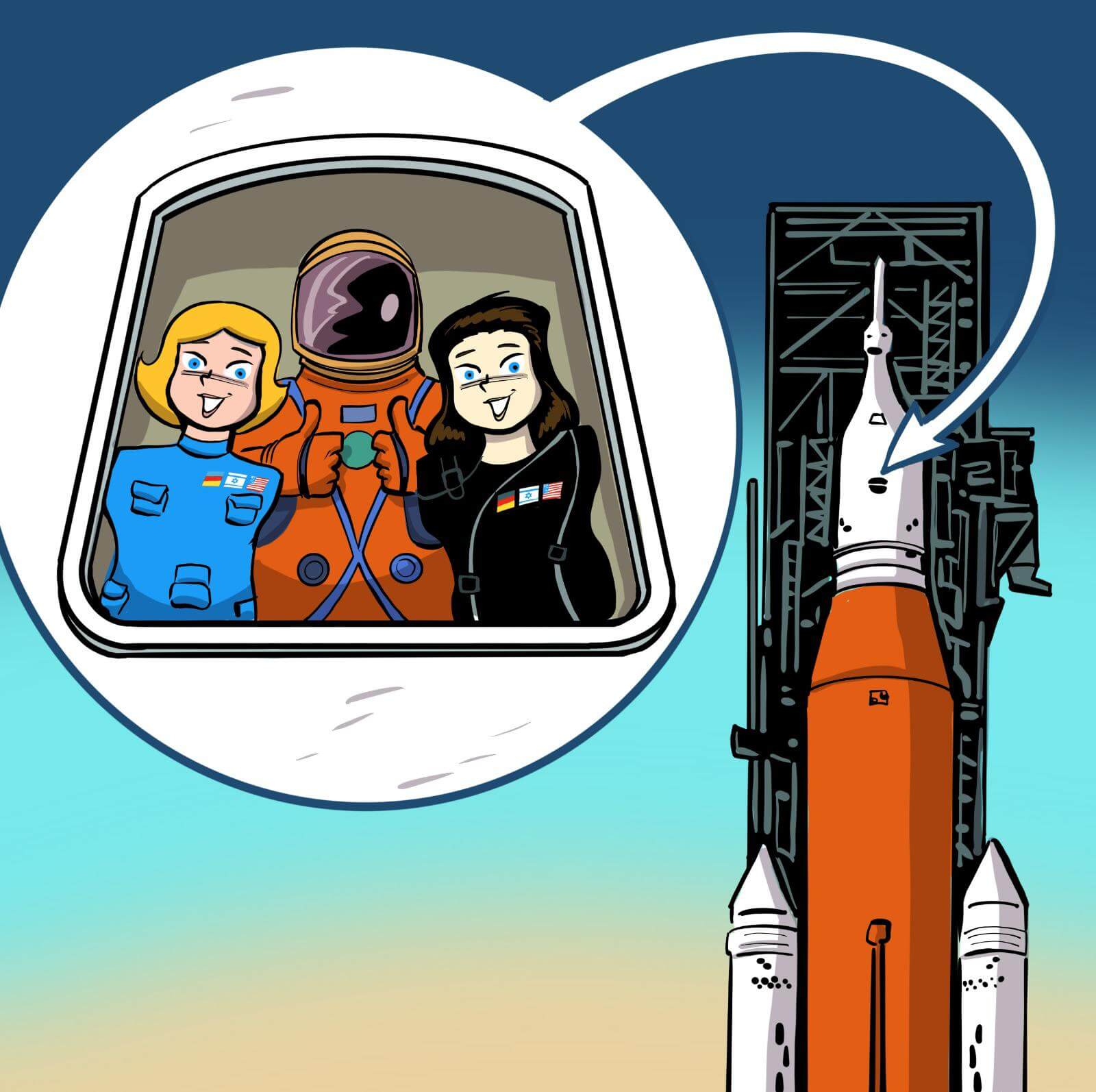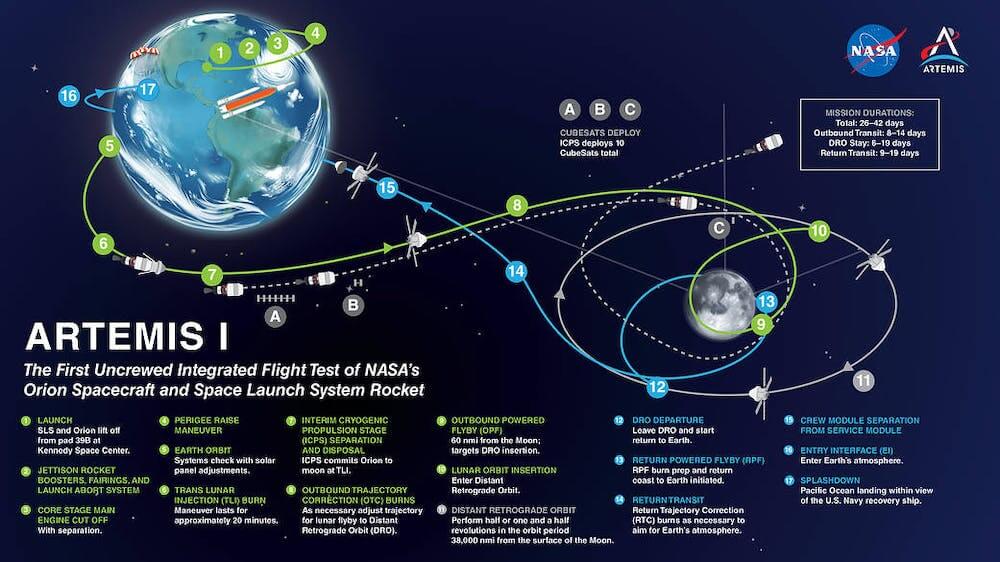The next launch window - on Friday, September 2, 2022, in the evening
Update 15:45 - The launch was canceled due to a leak from engine number 3. NASA personnel tried to analyze the malfunction using a procedure planned for such cases, but were unable to comply before the launch window closed. As mentioned, the next launch window will be on Friday, September 2 starting at 18:00 Israel time
Update 15:10 NASA is refilling the fuel tanks, the mission clock has stopped at minus 40 minutes, which means that the launch will definitely not take place at the planned time of 15:33.
Update 14:30: A malfunction in one of the engines caused the countdown to stop. Even if the fault is fixed, it is necessary to cool all four engines at the same time. If the launch does not take place today, the next launch window is on Friday evening
Live broadcast - the launch of the Artemis 1 spacecraft on the SLS rocket. The spacecraft will circle the moon for about 40 days


Artemis 1 is a first step towards Artemis 3, which will be the first manned mission to the Moon in the 21st century and the first since 1972. Artemis 1 is an unmanned test flight.
Artemis 2, whose launch is planned a few years later, will have astronauts. It too will be the coffee mission, much like Apollo 8, which circled the moon and returned home. The astronauts will spend a longer time orbiting the moon and will check everything with a manned crew.
And finally, it will lead to a journey to the surface of the moon where Artemis 3 – sometime in the middle of the decade – will rendezvous with a Space-X starship and land a crew. Orion would stay in orbit, and Starship would take the astronauts to the surface of the moon. Their destination will be the south pole of the moon to check an area that scientists have not explored before to study the water ice there.
The preparations for the Israeli-German radiation experiment have been completed
Preparations for the MARE experiment, a joint experiment by the Israeli Space Agency and the German Space Agency, in a scientific partnership with NASA, have been completed. In a solemn ceremony, NASA transferred the SLS launcher to the launch site, after the assembly of the Zohar and Helga mannequins was also completed and their installation on the Orion spacecraft, which will be launched into space on the Artemis-1 mission. The experiment will test the degree of radiation protection of the AstroRad vest, developed by the Israeli StemRad with the support of the Israel Space Agency in the Ministry of Innovation, Science and Technology.
The experiment will be carried out by comparing the radiation indices absorbed by the Israeli "Zohar" and the German "Helga" dolls, when only Zohar will wear the AstroRad protection vest. The experiment, jointly funded by the Israeli and German space agencies (DLR), is carried out by NASA with the assistance of Lockheed Martin (the manufacturer of the Orion spacecraft), and it takes place after a series of ergonomic vest experiments carried out by astronauts on the International Space Station. If the vest succeeds in dealing with the radiation in deep space, there is a high chance that NASA astronauts and astronauts will use the suit in the Artemis missions planned for the next decade, which are planned to land a man on the moon for the first time in 50 years.
For more information: Israeli development - at the heart of the Artemis 1 mission: mannequins on which the AstroRad vest that protects against radiation will be tested

3 תגובות
In the case of the moon, the timing must be taken into account so that the spacecraft reaches the moon and not a point far from it. In addition, and about this I prepared an article that I will publish soon, there is also the matter of exposure to the sun. The Orion spacecraft is powered by solar energy, so it has to orbit the moon in such a way that it will be exposed to the sun for a relatively long time.
What's more, it is supposed to circle the moon and not land at all
Can someone explain the concept of a time window?
Flying into space? what? Is it necessary to fly a spacecraft that will hit the moon? exactly? She can't go around it and land as the operators see fit? In it or on the ground?